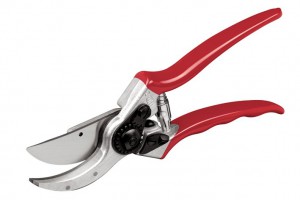Whip that landscape back into shape!
To Begin, Document problem areas
We have been getting many reports about small twigs on lawns; these can be caused by wind, or squirrels but they may also be victims of twig girdlers. These insects feed on the tender bark near branch ends and mate before laying eggs and girdling twigs (see image above for a visual of twig girdler symptoms). Twigs are girdled because the larvae cannot overwinter in living twigs so the branches are girdled and either remain on the tree or fall off. Cleaning up and destroying those that fall is a good control method; it removes the larvae that would become adults and repeat the process next year. Another great reason to do a fall clean up of landscape areas. Removing dead landscape material reduces insect eggs and fungus spores that could emerge next year.
Now is the time to take some notes on problem areas. If those azaleas always have lacebugs, note it. If the gardenias were covered in whiteflies all season, put it on paper. With gardening and landscaping, half the battle is planning and prevention, so taking stock this time of year will give you a some helpful reminders of what you need to do next spring, when the bright, exciting newness of annuals blocking out the realities of late summer!
This is also a good time to take notes on possible transplanting. Stand back and take a good look at what you have going on and what worked and didn’t work in it’s current location so that once it goes dormant and loses it’s leaves, you will remember the transplanting plan. On perennials, mark them so that when they go dormant, you know right where to dig.
The lawn is going dormant but there are still important lawn chores! Kill existing weeds by applying a post emerge such as Weed Out, apply pre-emerge to prevent new weeds from emerging, apply winterizer, and treat for grubs one last time, if you haven’t done so this fall. Last but not least, we are seeing brown patch show up in lawns right now (mid-October). With soil temperatures still warm, it would be good to treat with a systemic fungicide this fall and follow up next spring with another These chores will insure that your lawn is healthier next year!
Pruning tips
If those perennials are looking more like weeds than garden plants, consider trimming them back. For example, when the hosta leaves are turn yellow…you might as well trim off those leaves! Other perennials with foliage going dormant can be trimmed off too.
Don’t get too carried away on the pruning; be careful not to prune shrubs that bloom off old growth. This includes Encore azaleas, which should be pruned after the spring blooming, and most hydrangeas, which should be pruned after the blooming ends in the summer.
It’s time to shop!
Fall is the BEST time of year for planting trees and shrubs. Use Good Earth brand Jump Start at planting…this product will help your plants absorb up to 1,000 times more nutrients and water. Mulching will help the soil retail moisture and it will also reduce weeds!
Annual color should be fertilized, mulched and watered in well. Encourage blooming by fertilizing with Ferti-Lome Premium Bedding Plant Food, which has a high phosphate number reflected by the middle number on the package. Supplement with water soluable, high phosphate fertilizer, such as BR-61, during the fall, winter and early spring. Plants are growing when temperatures are above 45 degrees for a few days. Removing spent blooms throughout the season will promote blooms. Treat the planted areas with a pre-emerge every 60 to 90 days for weed control of winter weeds. Applying at least 3 inches of mulch will also discourage weed growth.
These are a few things to consider this time of year, but there are many more, so stop by Good Earth Garden Center for more information and great gardening tips from the experts!


